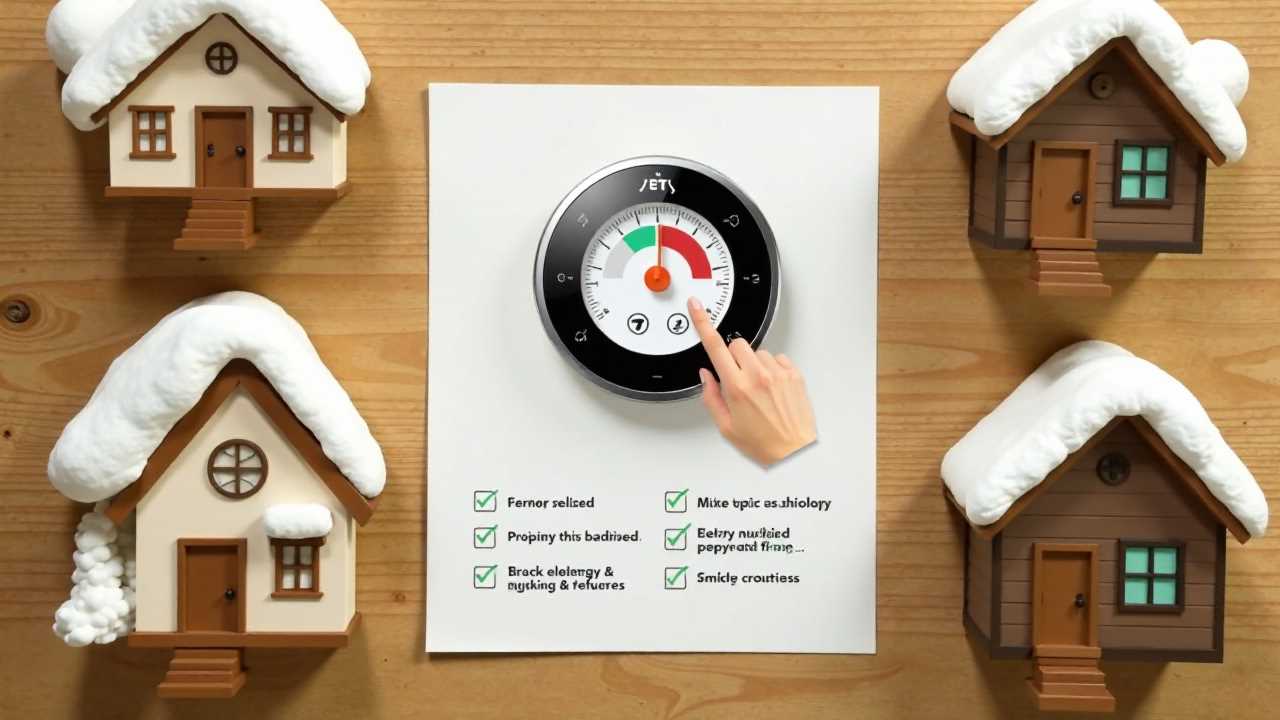
As winter approaches, homeowners face the challenge of keeping their homes warm while managing energy costs. Implementing effective winter energy-saving tips can significantly enhance comfort and savings. This article will guide you through essential strategies focusing on your thermostat, addressing drafts, ensuring proper maintenance, and optimizing heating efficiency and insulation.
Optimize Your Thermostat Settings
Your thermostat plays a crucial role in managing your home's temperature and energy consumption. Setting your thermostat to a lower temperature when you're not at home can lead to substantial savings. A recommended setting is around 68°F during the day and lowering it by 10-15°F at night or when you're away. Consider investing in a programmable or smart thermostat, which allows you to schedule temperature adjustments automatically, ensuring efficiency without sacrificing comfort.
Seal Drafts for Maximum Efficiency
Drafts can significantly undermine your heating efforts, allowing warm air to escape and cold air to enter. Conduct a thorough inspection of your home for drafts around windows, doors, and even electrical outlets. Use weatherstripping or caulk to seal gaps and cracks. Adding door sweeps can also help block cold air from entering beneath doors. By effectively sealing drafts, you can maintain a consistent indoor temperature and reduce your heating demands.
Regular Maintenance for Optimal Heating
Proper maintenance of your heating system is essential for efficiency and longevity. Schedule regular inspections and servicing for your furnace or heating system to ensure it operates at peak performance. Replace air filters monthly or as recommended to maintain airflow and efficiency. A well-maintained system not only heats your home effectively but also consumes less energy, leading to lower utility bills.
Enhance Insulation for Better Heat Retention
Insulation is a key factor in maintaining a warm home during winter. Ensure that your attic, walls, and floors are adequately insulated to prevent heat loss. Consider adding insulation if your home is older or if you notice significant temperature fluctuations. Insulating your home not only keeps it warmer but also reduces the workload on your heating system, improving overall energy efficiency.
Conclusion: Embrace Energy Efficiency This Winter
By implementing these winter energy-saving tips, you can maximize comfort and savings in your home. From optimizing your thermostat settings to sealing drafts, performing regular maintenance, and enhancing insulation, each step contributes to a more energy-efficient home. Embrace these strategies this winter and enjoy a cozy, cost-effective living environment.
 Family Craft ProjectsHome ImprovementCooking and BakingReuse and RecycleDIY GiftsEco-Friendly ProjectsDIY Home SolutionsSeasonal ActivitiesFun and GamesLearn TogetherPrivacy PolicyTerms And Conditions
Family Craft ProjectsHome ImprovementCooking and BakingReuse and RecycleDIY GiftsEco-Friendly ProjectsDIY Home SolutionsSeasonal ActivitiesFun and GamesLearn TogetherPrivacy PolicyTerms And Conditions
